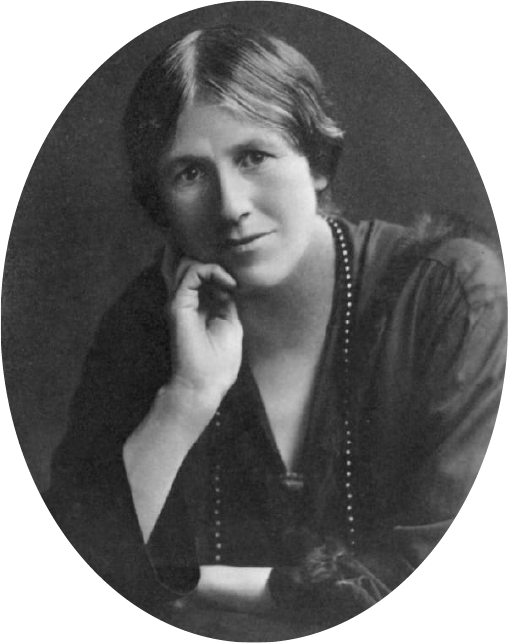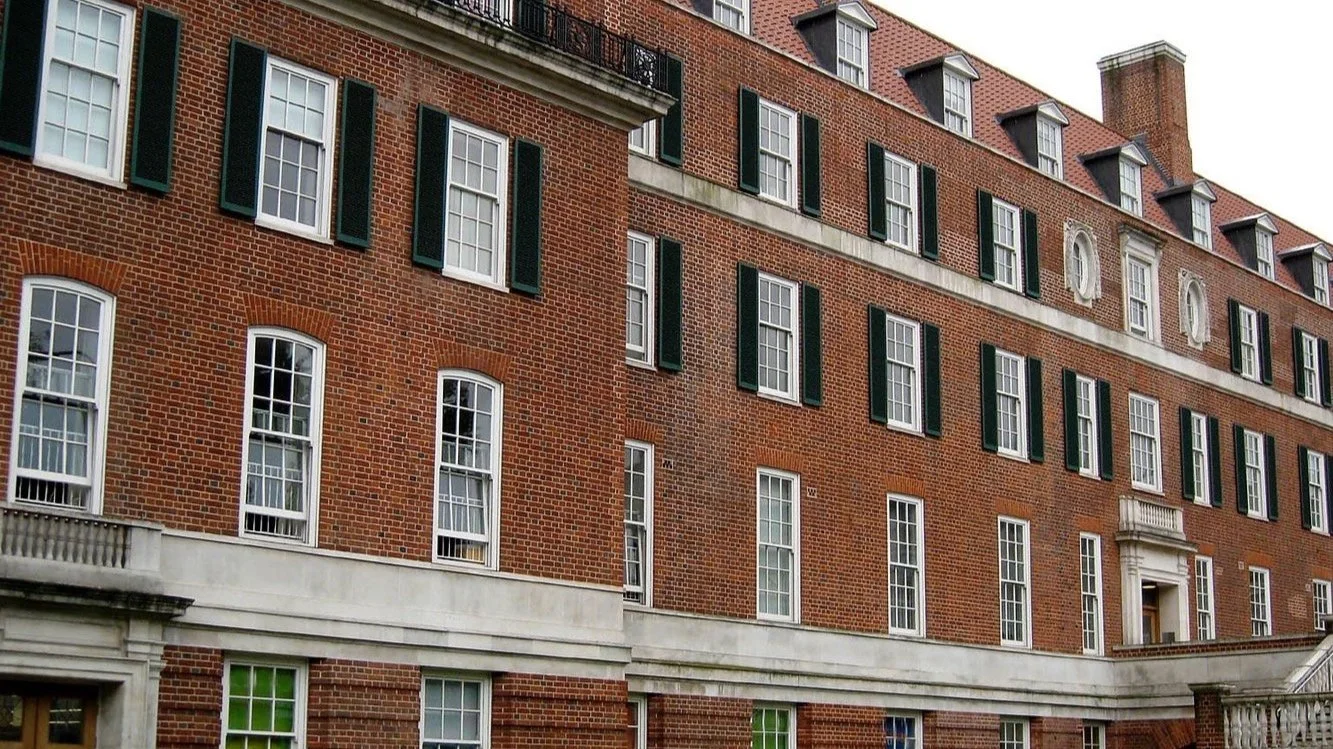and
Historical Insights
As you walk out of Clapham South tube station you might notice the imposing Edwardian building that sits at the top of Clapham Common South Side. A five storey Edwardian brick building with white window panes and green shutters. Clapham locals today might know it as their nearest big Tesco’s. However what you might not know is that this building was once home to one of London’s most progressive and impactful hospitals.
The South London Hospital was inaugurated in 1916 thanks to the work of two remarkable women, Maud Chadburn and Eleanor Davies-Colley. The Hospital’s mission was twofold;
To provide medical care exclusively for women who wanted to be treated by medics of their own sex.
To create a place where female doctors could specialise at a time when most hospitals turned female medics away.
The hospital was the first of its kind in Europe and its history, from the opening in 1916 to its closing in 1984, is a story of extraordinary characters and an enormous contribution made to bettering the quality of life for women of all backgrounds in South London.
The Founders
Eleanor Davies-Colley (1874-1934)
Born into an affluent medical family (both her father and brother were surgeons at Guy’s hospital) she did not begin life studying medicine but instead spent a large part of her youth in London’s East End living in very modest conditions whilst she studied the living conditions of some of the capital’s poorest residents. An experience which undoubtedly influenced her later work. In 1902 she began her studies of medicine at the London School of Medicine for Women as well as the London Free Hospital. Upon graduating in 1907 she became house surgeon at the Elizabeth Garrett Anderson and Obstetric Hospital on Euston Road Camden. In 1911 she became a fellow of the Royal College of Surgeons, the first woman to ever make this accomplishment. Described by her friends as reserved and deeply humble she nevertheless was a force to be reckoned with, totally uncompromising in her demand for nothing but the best and impatient of prejudice and bad manners. Her conscientiousness is described in numerous accounts with particular mention of her attention to detail in patients’ after-care.
Maud Chadburn (1868-1957)
Unlike Eleanor, Maud was not born into a medical family. Her father, a congregational minister from Blackburn, did not approve in the slightest of her ambitions to become a surgeon. The story goes that he denounced his own daughter from the pulpit during one of his sermons. Not in the least deterred, Maud studied medicine at the London School of Medicine for Women and subsequently at the Royal Free Hospital, where she later held the post of surgical registrar and anaesthetist. As well as founding the South London Hospital for Women she also surgeon at the Elizabeth Garrett Anderson Hospital, the Women’s Settlement Hospital, chairman of the Cancer Research Committee of the Marie Curie Hospital and president of the London Association of the Medical Women’s Federation. Her work changed the lives of thousands of people and in 1934 she was appointed CBE. She adopted three children and in later life shared a home with Eleanor Davies-Colley on Harley Street. Her relationship with her father was eventually reconciled and he provided his signature for the lease of the Harley Street residence.
The Opening of the Hospital
By 1911, both women were working as surgeons for the then named ‘New Hospital for Women’ in Euston (in 1918 the hospital was renamed in honour of the passing of its founder Elizabeth Garrett Anderson). The New Hospital for Women was staffed entirely by women but accepted patients of all sexes and was struggling to keep up with the growing number of patients at times forced to turn people away. With this in mind, Maud and Eleanor teamed forces and began fundraising to create a new hospital run by women, for women. A public appeal raised £5,000, enough to secure the purchase of Kingston House and Holland House on Clapham Common South Side from which they could begin working. Further fundraising efforts were met with bitter opposition, an open letter to The Times denounced the project as unnecessary and a mere excuse to allow women to practise medicine. The letter appears to have worked in favour of the women as in 1912, an anonymous donation was made of £53,000 towards construction and a further £40,000 for the endowment fund. In 1913 Princess Louise laid the foundation stone of the building we see today, and in 1916 Queen Mary opened the hospital which boasted 80 beds, marble covered walls, balconies for each ward, an electric lift and living quarters for staff.
The Hospital in the 20’s and 30’s
During the two decades that followed the hospital’s opening the facilities and care provided went from strength to strength thanks in no small part to Maud’s exhaustive fundraising efforts. Whilst continuing her work as a surgeon both at the South London Hospital and the Elizabeth Garrett Anderson Hospital she managed to secure thousands of pounds in donations. In 1927 part of the original freehold was demolished to make space for a new ‘North Wing’ including an out-patients department, 16 private patient rooms and a ward with 10 beds. In 1932 the hospital opened an x-ray department. By 1934 the hospital had 140 beds and in 1936 a state-of-the-art operating theatre was installed.
“My mum used to tell me all about the dancing and walking home over Cannock Chase in the early hours. My aunty had a job at a munitions factory, and women had, for the first time, their own money, and the men didn’t like it!”
During the war…
The outbreak of the Second World War changed the working of the SLH considerably. Preparations to open a new South Wing were put on ice and the hospital joined the Emergency Medical Service (EMS). An estimated 100,000 tons of bombs were expected to be dropped on London within the first fortnight of war. Plans were made to divide London hospitals into sectors, with central teaching hospital evacuated to accommodate casualties and peripheral bases outside the capital to run the operation. The SLH was no exception and a Special Act of Parliament allowed the hospital to treat male patients for the first time in its history. For the six years the war lasted the SLH did its part in the war effort, the out-patient waiting hall was converted into a ward and other rooms were turned into makeshift operating theatres. The normal work of the hospital was greatly reduced due to the shortage of staff and regular bombardments from the Axis Powers made things considerably harder. The SLH itself however managed to avoid any serious bombing with only one direct hit to the nearby nurses’ home.
During this time, whilst The National Service Act was enforced, men between the ages of 18 and 41 were conscribed to fight with a few exceptions made for key industries such as baking, engineering, farming and medicine, with the majority of doctors travelling to France to work in field hospitals. These measures allowed for a particular social shift to happen at home. The shortage of men encouraged women to step into new roles, roles they had previously been discouraged from holding and a new sense of responsibility and authority emerged from women contributing to the war effort.
This July, St Paul’s Opera will be present a new production of Gaetano Donizetti’s L’Elisir D’Amore, directed by Eloise Lally and conducted by Adrian Salinero. Typically staged in idyllic Italian countryside the opera tells the story of the young, slightly hapless Nemorino and his attempts at winning the affections of the beautiful Adina. His plans are stimied by the blustering Belcore and the visiting quack Dr Dulcamara, who claims his elixir of love holds the key to helping Nemorino win Adina over.
This production places the action in post war Clapham circa 1948. A challenging time for locals, rations continued, people were haunted by the horrors and psychological strain of WW2 yet the mentality of “keep calm and carry on” persisted.
Director Eloise Lally on L’Elisir D’Amore and the South London Hospital
“This L’Elisir brings us in direct contact with Clapham’s history. Discovering the history of the SLH has been so inspiring, especially in regard to the character of Adina. Creating her as a working woman in post war London, facing the harsh challenges that the time posed but also finding liberation within that. Dr Dulcamara’s elixir of love works as a beautiful metaphor for the delusional quality of hope that people really clung to at the time and the tension between the women who have been in charge during wartime and the men who are coming home was so appealing to me as a director.”
The Hospital’s Later Years
By the 1960’s the hospital had returned to its usual activities and boasted 263 beds. A plaque honouring Maud Chadburn was put up in 1958 after her passing in 1957 where she died peacefully in a bed provided by her own scrupulous fundraising. Throughout the 1970’s the NHS underwent several attempts at reorganisation, passing the institution from committee to committee eventually falling under the umbrella of the Wandsworth and East Merton District Health Authority. In 1982 the hospital was deemed ‘uneconomic’ and was put forward for closure, a decision that was met with fierce opposition.
Women from all walks of life, who had worked, given birth, been treated or visited loved ones at the SLH joined forces to oppose the plans to close the South London Hospital for Women. A petition signed by over 60,000 signatories demanded the closure be reconsidered and for 9 months campaigners occupied the hospital in a bid to prevent it from disappearing. Despite the public uproar the decision was carried through and in 1984 the hospital closed down. What is now flats and a Tesco’s was once home to a hub of innovation and collaboration that helped shape and care for our community. Many local residents still remember the hospital and some were even born there. Next time you step out of Clapham South tube station take a moment to celebrate the work of the incredible doctors, surgeons, nurses, midwives, mothers and daughters who made it happen.








